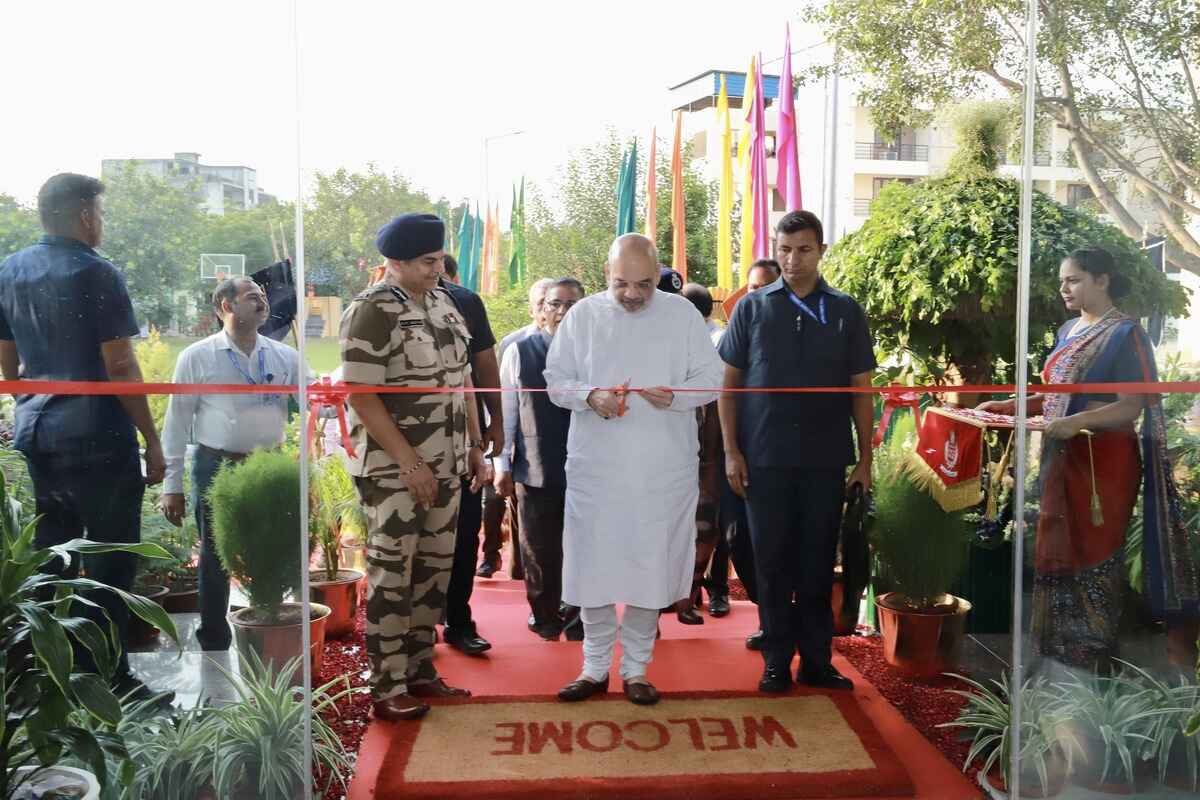
Aviation Security Control Center Of CISF, Officially Launched In Mahipalpur By Union Home Minister And Minister Of Cooperation, Shri Amit Shah
Today in New Delhi, the Central Industrial Security Force (CISF) Aviation Security Control Center (ASCC) was officially opened by Shri Amit Shah, Union Home Minister and Minister of Cooperation.
Shri Sheel Vardhan Singh, the director general of the CISF, as well as other senior officers of the organization were present.
One of the most dynamic, widely known, and environmentally conscious industries is aviation. Since the day CISF took control of the aviation sector, it has done a commendable job of establishing the security arrangements.

Under the direction of Prime Minister Shri Narendra Modi and Union Home Minister and Minister of Cooperation, Shri Amit Shah, the CISF has solidly established itself in Aviation Security in particular and internal security apparatus in general over the last few years through continued proactive operational orientation.
Qualitative improvement in the operational mandate necessitates a continuous dynamic adaptation with the environment in terms of operational practices, technological innovations and development of human resources. Airport Sector established an Aviation Security Control Center and an Aviation Security Technology Lab at Mahipalpur Campus in New Delhi to address the current challenges.
The CISF’s Airport Sector Headquarters is working to change how the HQrs Control Room operates from a traditional event-based information collection center to one that generates analyzed information in real time to ensure quick response and an improvement in airport security operations.
Starting today, the Aviation Security Control Center (ASCC) will have the following 04 components:-
1. Communication and Monitoring Centre:
- It will monitor bomb threat calls, VVIP movement, other major incidents, Pre Embarkation Security Check (PESC) Clearing times, etc. at airports in real time 24 hours a day, 7 days a week.
- To improve coordination and cooperation, two-way communication should be established with all Airport Units FHQrs/APS HQrs/Sector/Zonal HQrs and external organizations.
2. Incident Management Centre: The availability of all relevant data on technical devices, manpower, contingency plans, geographic information systems, floor plans, and sand models airports will aid in making quick decisions in the case of emergency.
3. Aviation Research Centre : It includes:
- Research & Analysis:
- Studying and analyzing the latest technologies
- Studying the throughput and efficiency of gadgets
- Studying the best practices established in different airports
- Data & Trend Analysis:
- Analysis of incidents occurring at the airports
- Analysis of the crowd at departure gates and SHA
- Software Development:
- Updating and securing the database
- Software development and testing
- Providing training to CISF personnel
4. Data Centre: It has the following features and will give technical support
- Storage capacity of 300 TB
- Servers for application hosting & Database
- 50 mbps Lease Line from MTNL
- Airports Data Security through VPN (Virtual Private Network)
- IP-PBX with capacity of 110 Intercom Telephone connections for Airports, Zones, Sectors and HQrs
To read more such news, download Bharat Express news apps






















